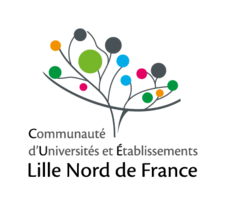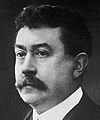|
|---|
SPI - Doctoral School
of
Engineering Sciences |
- IEMN-Institut d'électronique de microélectronique et de nanotechnologie, University of Lille & École centrale de Lille, Campus ValenciennesUMR8520
- CRIL-Centre de Recherche en Informatique de Lens, Campus Artois FRE 2499
- L2EP-Laboratoire d'électrotechnique et d'électronique de puissance de Lille, University of Lille & École centrale de Lille - ENSAM HEI EA 2697
- LG2IA-Laboratoire de Génie Informatique et Automatique de l’Artois, Campus Artois 3926
- LAGIS-Laboratoire d'Automatique, Génie Informatique et Signal, University of Lille & École centrale de Lille, UMR 8146
- LAMAV-Laboratoire de Mathématiques et ses applications de Valenciennes, Campus Valenciennes
- LAMIH-Laboratoire d’Automatique, de mécanique et d’informatique industrielles et humaines, Campus Valenciennes UMR 8530
- LAMTI-Laboratoire d’Artois de Mécanique, Thermique et Instrumentation, Campus Artois EA 2472
- LASL-Laboratoire d’Analyse des systèmes du Littoral, Campus Littoral EA 2600
- LEMCEL, Laboratoire d’Etude des Matériaux et des Composants pour l’Electronique, Campus Littoral EA 2601
- LIFL-Laboratoire d'Informatique Fondamentale de Lille, University of Lille UMR 8022
- LIL-Laboratoire d’informatique du Littoral, Campus Littoral TRIGONE EA 4029
- LLL-Laboratoire Liouville du Littoral, Campus Littoral EA 2597
- LME-Laboratoire de Mécanique et Energétique, Campus Valenciennes EA 2447
- LML-Laboratoire de mécanique de Lille, University of Lille & École centrale de Lille, UMR 8107
- LMLens-Laboratoire de mathématiques de Lens, Campus Artois EA 2462
- LMP-Laboratoire des Matériaux et Procédés, Campus Valenciennes EA 2443
- LPP-Laboratoire de mathématiques de Lille - Paul Painlevé, University of Lille UMR 8524
- LRGI-Laboratoire de recherche en génie industriel de Lille (Systems engineering), École centrale de Lille
- LSEE-Laboratoire des systèmes électrotechniques et environnement, Campus Artois EA 4025
|
|---|
SMRE Doctoral School
for
Science of Matter,
Radiation,
Environment
|
- IMCCL - Institut des molécules et de la matière condensée de Lille, University of Lille
- UCCS - Unité de catalyse et de chimie du solide de Lille, ENSCL, École centrale de Lille & Campus Artois UMR 8181
- LASIR - Laboratoire de SpectroChimie InfraRouge et Raman, University of Lille UMR 8516
- LCE - Laboratoire de Catalyse et Environnement, Campus Littoral EA 2598
- LCOM - Laboratoire de Chimie Organique et Macromoléculaire, University of Lille & ENSCL UMR 8009
- LDSMM - Laboratoire de Dynamique et Structure des Matériaux Moléculaires, University of Lille
- LENE - Laboratoire d’Ecologie Numérique et Ecotoxicologie, University of Lille
- LGEPV - Laboratoire de Génétique et Evolution des Populations Végétales, University of Lille UMR 8016
- LGPTA - Laboratoire de Génie des Procédés et Technologie Alimentaires, University of Lille U_INRA 638
- LMPE - Laboratoire de Mycologie, Phytopathologie et Environnement, Campus Littoral EA 2602
- LMPGM - Laboratoire de Métallurgie Physique et Génie des Matériaux, University of Lille & ENSCL, UMR 8517
- LOA - Laboratoire d’Optique Atmosphérique, University of Lille UMR 8518
- LPCA - Laboratoire de Physico-Chimie de l’Atmosphère, Campus Littoral UMR 8101
- LSOE - Laboratoire de Synthèse Organique et Environnement, Campus Littoral EA 2599
- LSPES - Laboratoire de Structure et Propriétés de l’Etat Solide, University of Lille & ENSCL UMR 8008
- LTPMC - Laboratoire de Thermo-Physique de la Matière Condensée, Campus Littoral UMR 8024
- IRI - Institut de Recherches Interdisciplinaires, University of Lille FRE 2693
- BDM - Laboratoire Biostructures et Découverte du Médicament, University of Lille U_INSERM 761
- EMDCE - École des Mines de Douai, Département Chimie et Environnement,
- EMDGC - École des Mines de Douai, Département Génie Civil
- EMDTPC - École des Mines de Douai, Département Technologie des polymères et composites
- GEOSYS - Laboratoire Géosystèmes, University of Lille UMR 8157
- GEPIFREM - Laboratoire de Génie des Procédés d’Interaction Fluides Réactifs, University of Lille EA 3571
- GRAM - Groupe de Recherche Analyse du Médicament, University of Lille EA 4034
- LOG - Laboratoire d'Océanologie et de Géosciences (LOG), University of Lille & Campus Littoral UMR 8187
- PhLAM - Laboratoire de Physique des Lasers, Atomes et Molécules, University of Lille UMR 8523
- ProBioGEM - Laboratoire Procédés Biologique et Génie Enzymatique et Microbien, University of Lille EA 1026
- SADV - Laboratoire Stress Abiotique et Différenciation des Végétaux Cultivés, University of Lille U_INRA 1281
|
|---|
Doctoral School
Bio-Health
|
- EA 1043 - Groupe de recherche et d'innovation thérapeutique, University of Lille
- EA 1046 - Cibles pharmacologiques cellulaires et moléculaires, pathologies neurovasculaires et cardiovasculaires, University of Lille
- EA 1049 - Biophysique, Médecine Nucléaire et Technologies Médicales, University of Lille
- EA 2465 - Physiopathologie de la cellule endothéliale cérébrale, Campus Artois
- EA 2603 - LR3B ERI 2 - Laboratoire de Recherche sur les Biomatériaux et les Biotechnologies, University of Lille
- EA 2603 - Laboratoire de Biologie Cellulaire et Moléculaire, Campus Littoral
- EA 2679 - Variabilité génétique de réponse de l'organisme face à son environnement chimique
- EA 2683 - Noyaux gris centraux
- EA 2686 - Laboratoire d'Immunologie. Homéostasie du Compartiment Lymphocytaire Périphérique, University of Lille
- EA 2689 - Détresses Respiratoires et Circulatoires. Physiopathologie, University of Lille
- EA 2690 - Toxiques et cancérogènes professionnels et environnementaux
- EA 2691 - Troubles Cognitifs Dégénératifs et Vasculaires, University of Lille
- EA 2692 - Groupe de recherche sur l'inhibition de la prolifération cellulaire, University of Lille
- EA 2693 - ERI 9 Laboratoire de Recherche en Hémostase et Pathologie Vasculaire, University of Lille
- EA 2694 - Santé Publique : modélisation et épidémiologie des maladies chroniques, University of Lille
- EA 3608 - Activité Physique, Sport, Santé, University of Lille
- EA 3609 - Présence et circulation de pathogènes eucaryotes dans les écosystèmes, University of Lille
- EA 3610 - Pathogénèse virale du diabète de type 1, University of Lille
- EA 3614 - Aide à la décision en santé, University of Lille
- EA 3925 - Interrelations inflammation infection et malnutrition au cours des maladies respiratoires chroniques de l'enfant
- EA 4020 - Régulation des signaux de division, University of Lille
- EA 4031 - Ethique de la recherche clinique, Lille
- EA 4032 - Physiopathologie et thérapeutique des tissus calcifiés, University of Lille
- EA 4034 - Groupe de recherche Analyse du Médicament, University of Lille
- EA 4052 - Neurosciences et physiologie adaptatives, University of Lille
- FRE 2933 - Neuroimmunologie des Annélides, University of Lille
- FRE 2963 - Institut de Recherches Interdisciplinaires – IRI
- JE 2488 - ERI 8 - Biologie du développement, University of Lille
- JE 2490 - Pathologie cardio-pulmonaire d'origine anténatale, University of Lille
- JE 2491 - Médicaments à libération contrôlée du principe actif : Mécanismes et optimisation, University of Lille
- U 545 - Récepteurs nucléaires, lipoprotéines et athérosclérose, University of Lille
- U 547 - Schistosomiase, paludisme et inflammation, University of Lille
- U 629 - Mécanismes Moléculaires de la Pathologie Bactérienne, University of Lille
- U 703 - Thérapies interventionnelles assistées par l'image et la simulation, University of Lille
- U 744 - Unité d'Epidémiologie et de Santé Publique, University of Lille
- U 761 - Biostructures et découverte du médicament, University of Lille
- U 774 - Biomolécules et Inflammation Pulmonaire, University of Lille
- U 795 - Physiopathologie des Maladies Inflammatoires intestinales, University of Lille
- U 799 - Physiopathologie et diagnostic des candidoses, University of Lille
- U 800 - Laboratoire de Physiologie Cellulaire, University of Lille
- U 801 - Etudes des interactions cellulaires et moléculaires des bactéries pathogènes avec l'hôte, University of Lille
- U 837 - JPARC, Centre de Recherche Jean-Pierre Aubert, University of Lille
- U 859 - Thérapie cellulaire du diabète, University of Lille
- UMR-CNRS 8009 - Protéomique, Spectrométrie de masse, University of Lille
- UMR-CNRS 8090 - Génétique des maladies multifactorielles, University of Lille
- UMR-CNRS 8160 - Neuroscience fonctionnelle et pathologies, University of Lille
- UMR-CNRS 8161 - Institut de Biologie de Lille
- UMR-CNRS 8576 - Glycobiologie Structurale et Fonctionnelle, University of Lille
|
|---|
Doctoral School
in
Business,
economics,
urban planning,
management
|
- CLERSE (économie, sociologie, anthropologie), University of Lille UMR 8019
- DRT Dynamique des réseaux et territoires (géographie), Campus Artois EA 2468
- EE (économie, économétrie), University of Lille EA 4018
- EREIA (économie, sciences de gestion) Campus Artois EA 4026
- GRACC (sociologie, anthropologie), University of Lille, EA 3589
- LRII (économie, sciences de gestion), Campus Littoral EA 3604
- IMN (économie, sociologie, géographie) Campus Littoral EA 1702
- LEM-FUPL (sciences de gestion, économie), University of Lille UMR 8179
- LEMMA (économie) Campus Littoral JE 2467
- PGQ (préhistoire, géographie physique), University of Lille FRE 2941
- TVES (géographie, aménagement/urbanisme), EA 4019, University of Lille
|
|---|
Doctoral School
in
Social Sciences
and
Humanities
|
- Alithila (Analyse littéraire et Histoire de la langue), University of Lille EA 1061
- CAMELIA (Centre d’Analyse du message littéraire et artistique), Campus Valenciennes EA 2446
- CRHICC(Centre de recherche en Histoire, Civilisations et cultures des pays du monde occidental)Campus Valenciennes EA 2444
- CAMLMA (Centre d’Analyse du message littéraire et artistique), Campus Valenciennes EA 2444
- CEAC (Centre d’Etude des Arts contemporains), University of Lille EA 3587
- CECILLE (Centre d’Etude en Civilisations, Langues et Littératures étrangères), University of Lille EA 4074
- CERTEL (Centre d’études et de recherches sur les textes électroniques), Campus Artois EA 3607
- CIREL, Sciences de l’éducation, University of Lille EA 2261, EA 1764,EA 1038
- GERIICO (Groupe d’Etudes et de recherches interdisciplinaire en Information et Communication), University of Lille EA 4073
- Grammatica (Centre de recherches en linguistique française), Campus Artois JE 2489
- HALMA (Histoire, Archéologie, Littérature des mondes Anciens – Institut de papyrologie et d’Egyptologie de Lille), University of Lille UMR 8164
- CREHS (Centre de recherche et d’études « histoire et sociétés », Campus Artois EA 4027
- HLLI (Histoire, Langues, Littératures, Interculturalité), Campus Littoral EA 4030
- IRHIS (Institut de recherches Historiques du Septentrion), University of Lille UMR 8529
- LSC (Laboratoire des sciences de la communication), Campus Valenciennes EA 2445
- PSITEC (Psychologie : interactions, temps, émotions, cognition), University of Lille EA 4072
- SELOEN (Sémantique, logique, Enonciation), University of Lille JE 2498
- STL (Savoirs, Textes, Langages), University of Lille, UMR 8163
- URECA (Unité de recherche sur l’Evolution du Comportement et de l’Apprentissage), University of Lille EA 1059
- Textes et Cultures, Campus Artois EA 4028
- LAMIH-Laboratoire d’Automatique de Mécanique et d’Informatique industrielles et humaines, Campus Valenciennes
- PERCOTEC (Psychologie et ergonomie cognitive dans les environnements technologiques), Campus Valenciennes
|
|---|
Doctoral School
for
Law,
Administration,
Political Science
|
- Institut d'études politiques de Lille (Sciences Po Lille)
- Institut de recherche en droit public (University of Lille, EA n° 4036)
- Institut de recherche sur l'évolution de l'environnement normatif des activités transnationales (University of Lille, IREENAT, EA n° 3612)
- Institut du développement et de la prospective (Campus Valenciennes, EA n° 1384)
- Centre de recherches d'histoire judiciaire (University of Lille-CNRS, CHJ, UMR n° 8025)
- Centre d'études et de recherches administratives, politique et sociales (University of Lille-CNRS, CERAPS, UMR n° 8026)
- Centre René Demogue de droit des obligations et théorie du droit (University of Lille, René Demogue, EA n° 3613)
- Centre d'études politiques sur l'Europe du Nord (University of Lille, CEPEN, EA n° 4049)
- Centre éthique et procédures (Campus Artois EA n° 2471)
- Centre de recherche en éthique de la recherche clinique (University of Lille, EA n° 4031)
- Laboratoire d'études et de recherches appliquées au droit privé (University of Lille, LERADP, EA n° 1055)
- Laboratoire d'études et de recherches en droit social (University of Lille, LEREDS, EA n° 3611)
- Laboratoire de Recherche Juridique (Campus LittoralLARJ, EA n° 3603)
- Laboratoire de sciences sociales, sport, identité, culture (University of Lille, EA, n° 4110)
- Groupe d'études et de recherches en management des entreprises (University of Lille, GERME, EA n° 1056)
|
|---|
|
|










